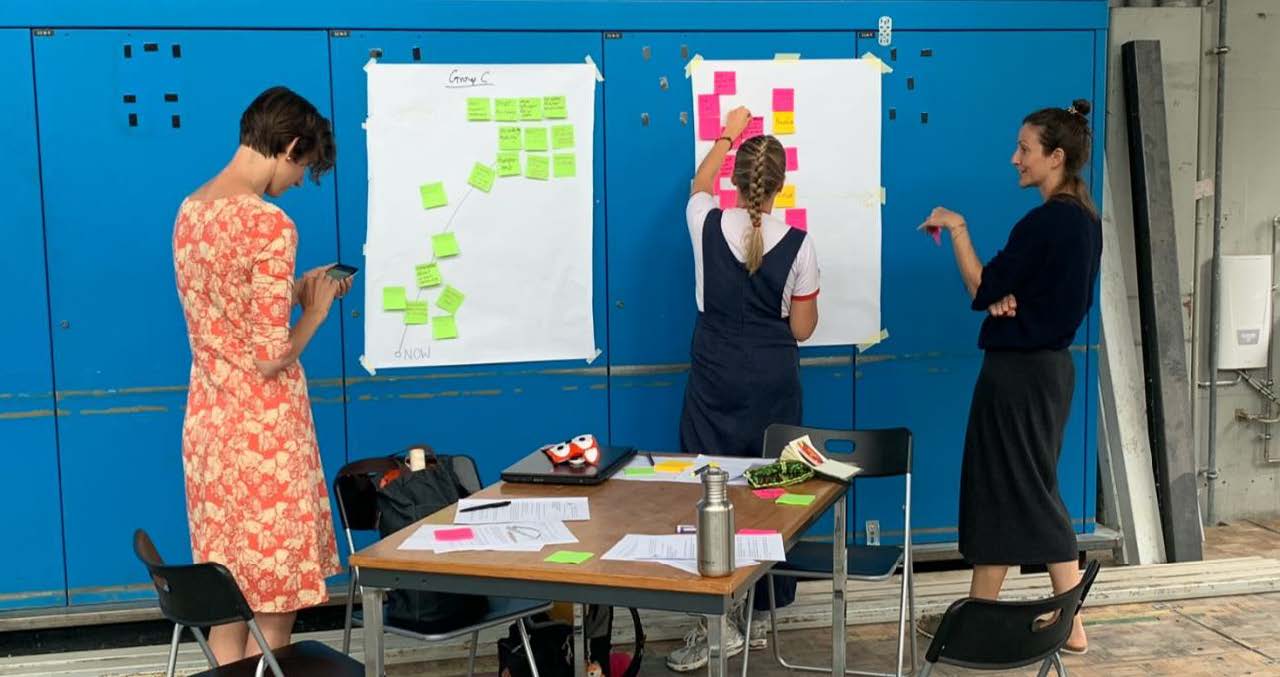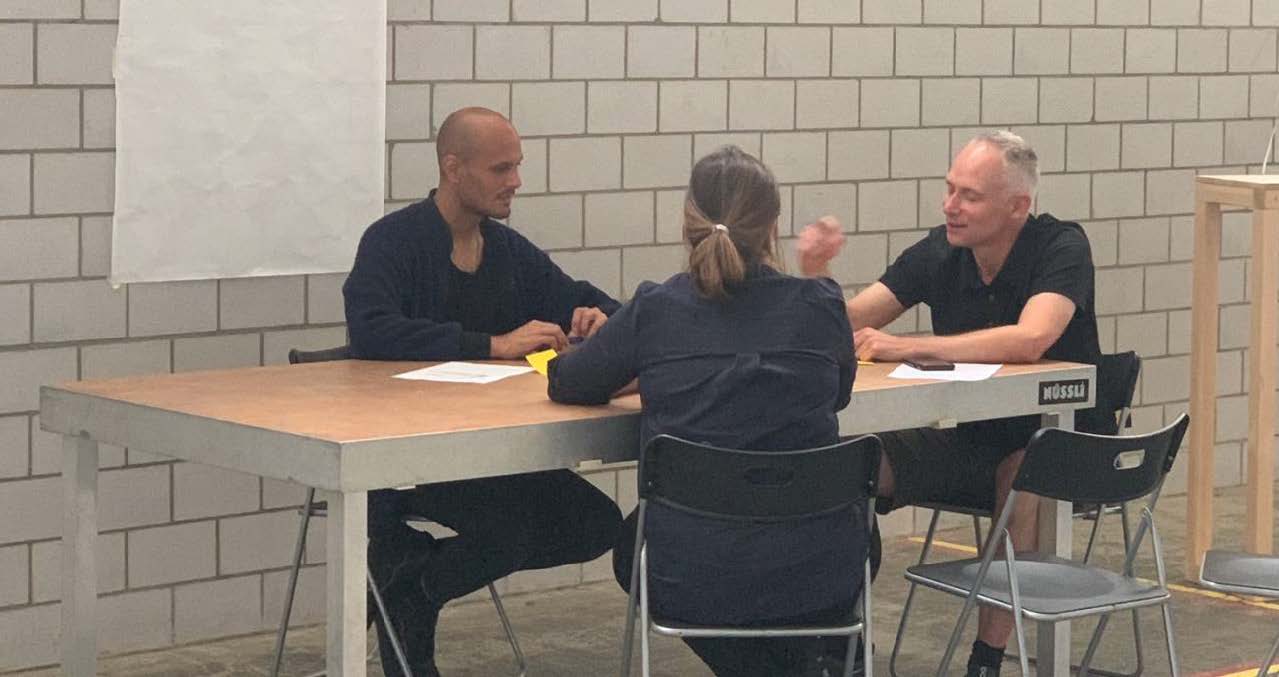David Christie
HEAT-Method
Never before have we known so much about how human behaviour impacts the environment. The resulting global warming leads to resource shortages and loss of habitat supporting human life. Yet we seem to do little. Despair, denial and disengagement significantly inhibit action taking at all levels. My MAS thesis, the culmination of my MAS in Strategic Design at the Zurich University of the Arts (ZHdK) in March 2020, focuses on empowering positive engagement, starting with individuals and households in Switzerland.
A strategic design approach, involving research into the psychological and cognitive mechanisms behind denial led to the HEAT Method (in short: Hope, Evaluate, Act, Tell), which focuses on emotional and motivational aspects and designs a positive future vision, a set of concrete actions and a corresponding narrative. Sharing the narrative openly is used to start a grassroots movement. The ideas underlying HEAT originate from experiences in the author’s family. Approaches for scaling up to society at large are also investigated. The result is a way of keeping motivated and engaged.
At EcoArtLab the research through design process started in the MAS made a leap forward with a first trial of the HEAT Method in a group workshop setting. As part of the preparation, I also set up an accompanying website, heat-method.info/, and extended the MAS Thesis text so that it automatically adjusts for both individual and group settings.
The actual workshop also contained innovations to take account of the fact that the work was group- and workshop-based rather than centred around an individual in a structured discussion setting.
Feedback from the participants was positive and constructive. As with the individuals, the groups were surprised how they managed to create a positive future vision, list of focused and achievable actions and an accompanying narrative in a compact workshop. Furthermore, the participants reported that the work in groups resulted in far more ideas than they would have expected.
As a result of the EcoArtLab intervention, I will further refine the HEAT Method to make it even more accessible in the group workshop environment. The pictures were taken at the HEAT Workshop held on 28th August 2020 as part of the EcoArtLab.
H – start with HOPE
In 2019, we were all very impressed by Greta Thunberg when she deplored global warming inaction with her no-nonsense, candid and blunt “the emperor wears no clothes” style. However, her image of our burning home lacks a key ingredient: hope.
Hope needs courage. It needs the courage to believe that we can get the worst excesses of the climate crisis under control, we can find new and innovative ways of living without fossil fuels, we can imagine how not to destroy the habitat of humanity (and the flora and fauna that accompany us), we can instrumentalise human ingenuity for good.
Amidst all the bad news that we are knowingly and collectively destabilising our environment, degrading whole ecosystems, destroying natural habitats of both humans and animals and all the rest, we need hope so that we do not give in to despair and darkness and let cynical politicians and lobbyists manipulate us with fear.
The H step ends with a formulated, positive future vision and a first set of actions that can be taken to move towards that future state.
E – EVALUATE your approach
At this point the actions that were generated before are evaluated. An honest assessment of the possible actions anchors them to reality and simultaneously empowers by establishing a personal relationship.
Step E goes through a number of evaluation steps, culminating in a HEAT Map which shows how the actions are clustered and which actions can immediately be put into action.
A – actually ACT
The A step in the HEAT Method concerns itself with committing to the initial actions on the plan.
The actions will of course not be carried out during the workshop. But it should be possible to select actions which can be started as soon as possible, or at least where a first step can be taken to initiate the action. Reflect on the fact that almost nothing stops us from taking action and that we do have power to make change happen. Step A ends with a list of classified, achievable actions.
In 2019, we were all very impressed by Greta Thunberg when she deplored global warming inaction with her no-nonsense, candid and blunt “the emperor wears no clothes” style. However, her image of our burning home lacks a key ingredient: hope.
Hope needs courage. It needs the courage to believe that we can get the worst excesses of the climate crisis under control, we can find new and innovative ways of living without fossil fuels, we can imagine how not to destroy the habitat of humanity (and the flora and fauna that accompany us), we can instrumentalise human ingenuity for good.
Amidst all the bad news that we are knowingly and collectively destabilising our environment, degrading whole ecosystems, destroying natural habitats of both humans and animals and all the rest, we need hope so that we do not give in to despair and darkness and let cynical politicians and lobbyists manipulate us with fear.
The H step ends with a formulated, positive future vision and a first set of actions that can be taken to move towards that future state.
E – EVALUATE your approach
At this point the actions that were generated before are evaluated. An honest assessment of the possible actions anchors them to reality and simultaneously empowers by establishing a personal relationship.
Step E goes through a number of evaluation steps, culminating in a HEAT Map which shows how the actions are clustered and which actions can immediately be put into action.
A – actually ACT
The A step in the HEAT Method concerns itself with committing to the initial actions on the plan.
The actions will of course not be carried out during the workshop. But it should be possible to select actions which can be started as soon as possible, or at least where a first step can be taken to initiate the action. Reflect on the fact that almost nothing stops us from taking action and that we do have power to make change happen. Step A ends with a list of classified, achievable actions.
T – TELL your story
The T step in the HEAT Method frames your future vision and initial concrete steps into a compelling story of your approach.
In a group setting, each person should write their own personal “elevator speech” based on the work carried out by the group (see below for an example), answering the question “…and what are you doing about global warming?”. Write your story and check that it is clear, relevant and exciting.
Start your own grassroots movement! Plan to tell others your story and what you have done in the coming weeks. Take care not to judge others. Concentrate on explaining your personal vision and plan as derived from the work in the group.
Your story should enable you to move from a feeling of hope to a feeling of empowerment. At least some first steps can be taken, even if the solution is not complete. Being able to tell your story is a way to keep denial and apathy at bay. It is also a way to build your own confidence and start to handle criticism.
Step T ends with a written narrative and a commitment to tell others. The written narrative is also put into an envelope and sent to the participants several weeks after the workshop to personally anchor the workshop results.
To contact the author of the HEAT Method, David Christie, send an e-mail to info@heat-method.info. To read more, create a free profile on the website, which provides access to the background information.
The T step in the HEAT Method frames your future vision and initial concrete steps into a compelling story of your approach.
In a group setting, each person should write their own personal “elevator speech” based on the work carried out by the group (see below for an example), answering the question “…and what are you doing about global warming?”. Write your story and check that it is clear, relevant and exciting.
Start your own grassroots movement! Plan to tell others your story and what you have done in the coming weeks. Take care not to judge others. Concentrate on explaining your personal vision and plan as derived from the work in the group.
Your story should enable you to move from a feeling of hope to a feeling of empowerment. At least some first steps can be taken, even if the solution is not complete. Being able to tell your story is a way to keep denial and apathy at bay. It is also a way to build your own confidence and start to handle criticism.
Step T ends with a written narrative and a commitment to tell others. The written narrative is also put into an envelope and sent to the participants several weeks after the workshop to personally anchor the workshop results.
To contact the author of the HEAT Method, David Christie, send an e-mail to info@heat-method.info. To read more, create a free profile on the website, which provides access to the background information.





